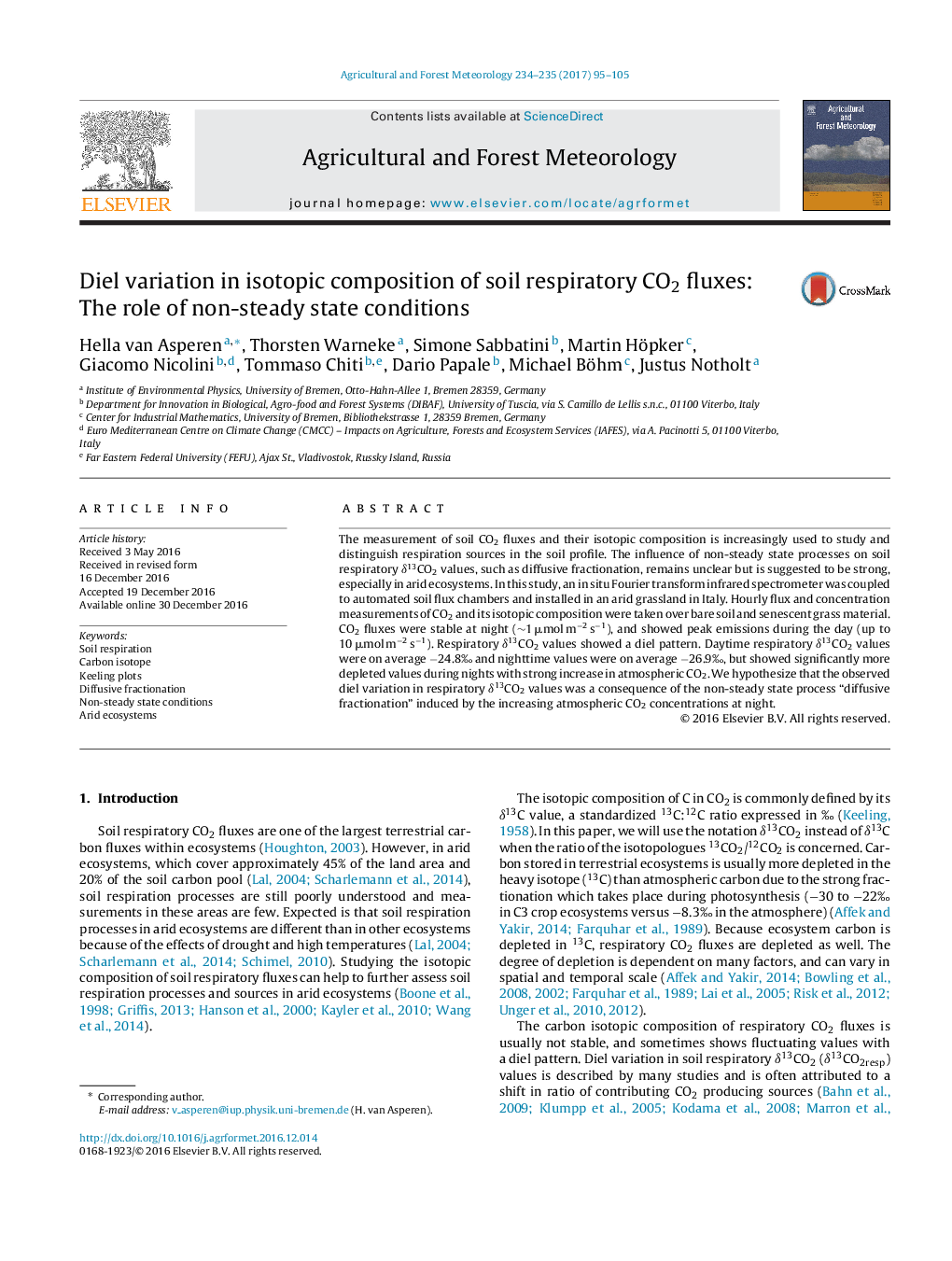| Article ID | Journal | Published Year | Pages | File Type |
|---|---|---|---|---|
| 6457974 | Agricultural and Forest Meteorology | 2017 | 11 Pages |
â¢An FTIR analyzer was set up in an arid grassland and connected to flux chambers.â¢By use of Keeling plots, hourly respiratory δ13CO2 values were obtained.â¢Nighttime respiratory δ13CO2 was more depleted than daytime values.â¢Nighttime isotopic depletion is proposed to be caused by atmospheric CO2 increase.â¢Future studies should be aware of non-steady state effects on δ13CO2resp.
The measurement of soil CO2 fluxes and their isotopic composition is increasingly used to study and distinguish respiration sources in the soil profile. The influence of non-steady state processes on soil respiratory δ13CO2 values, such as diffusive fractionation, remains unclear but is suggested to be strong, especially in arid ecosystems. In this study, an in situ Fourier transform infrared spectrometer was coupled to automated soil flux chambers and installed in an arid grassland in Italy. Hourly flux and concentration measurements of CO2 and its isotopic composition were taken over bare soil and senescent grass material. CO2 fluxes were stable at night (â¼1 μmol mâ2 sâ1), and showed peak emissions during the day (up to 10 μmol mâ2 sâ1). Respiratory δ13CO2 values showed a diel pattern. Daytime respiratory δ13CO2 values were on average â24.8â° and nighttime values were on average â26.9â°, but showed significantly more depleted values during nights with strong increase in atmospheric CO2. We hypothesize that the observed diel variation in respiratory δ13CO2 values was a consequence of the non-steady state process “diffusive fractionation” induced by the increasing atmospheric CO2 concentrations at night.
